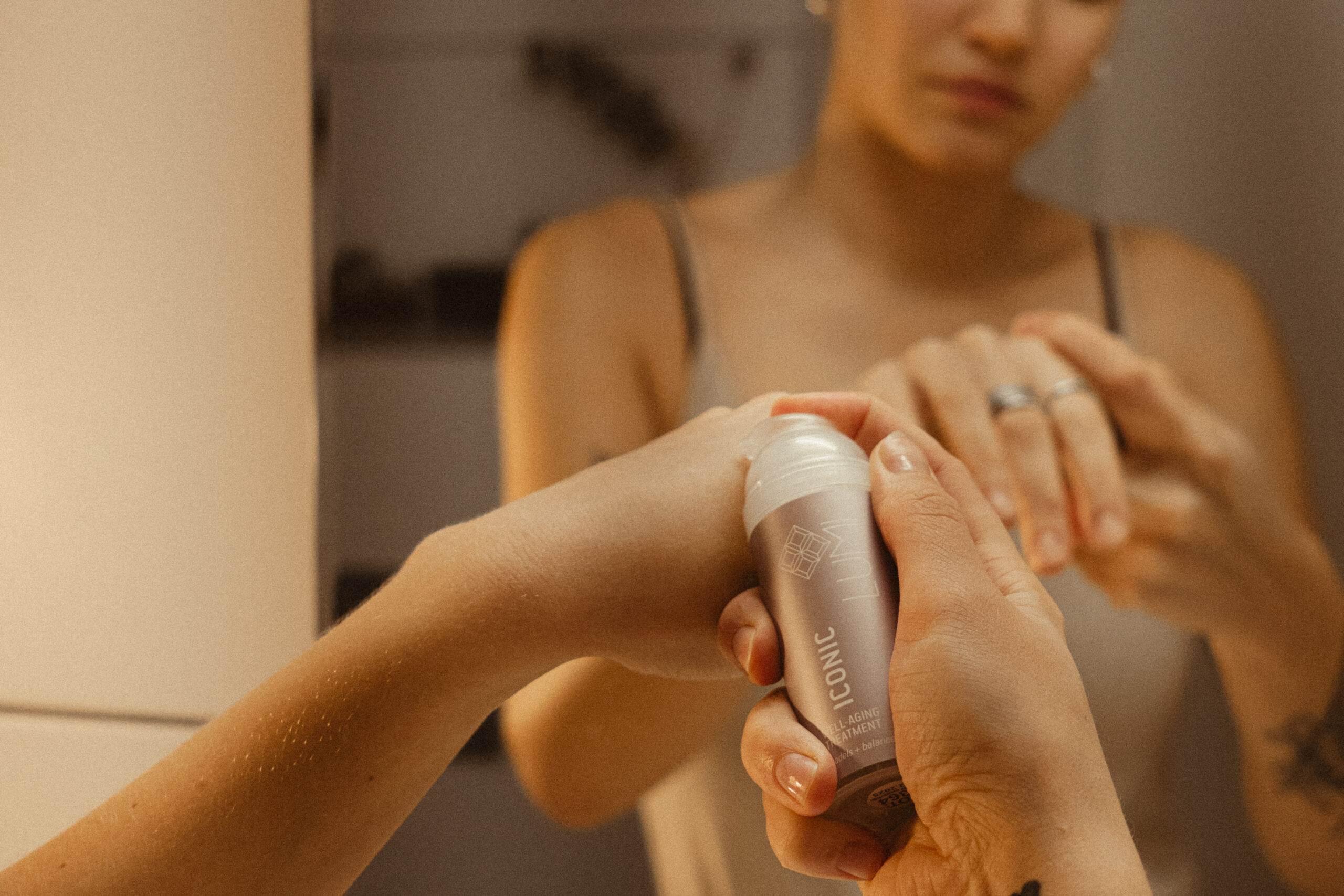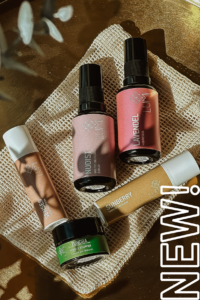
The Retinoid Revolution
If you’re interested in skincare, then it’s likely you’ve already heard of retinol and retinoids. First discovered in 1913 and steadily developed through four generations over the last half-century, retinoids are natural or synthetic derivatives of vitamin A. They are lauded by much of the skincare industry and surrounding media for their effectiveness and wide applications in medicine and cosmetology.
But that’s not the whole story! Retinol use can bring with it a host of unwelcome side effects, including skin dryness, peeling, and stinging. For decades, users of retinol have put up with this pain and discomfort, assuming that this was the price they must pay for better skin.
This doesn’t have to be the case, however! Bakuchiol, a completely natural compound found within the babchi plant, has shown remarkably similar properties to retinol, with none of the typical side-effects that regular retinoid users have come to dread.
Interested in learning more? Then come with us, dear reader, as we explain the science behind bakuchiol, and how you really can have your cake and eat it, too!
The Highs and Lows of Vitamin A
First granted approval as a topical medicine in the US in 1971, retinoids have become extremely popular in the treatment of acne, photoaged (aging from sun exposure) skin, hyperpigmentation, and several other skin complaints. They consistently perform in both scientific studies and consumer reviews, and have gained a reputation throughout the skincare landscape as a high-efficacy ingredient.
Retinol works by bolstering the body’s natural processes of wound healing. This process is usually incredibly effective, regenerating our bodies over and over, but can be disrupted by age, disease, and other factors, resulting in imperfect healing (scarring, wrinkles, hyperpigmentation, and more). Retinoids help facilitate proper wound healing by increasing the amount of cell differentiation/specialisation, proliferation, and apoptosis (programmed and orderly cell death, ready for new cells to take their place). By reducing the production of sebum, retinoids are also effective at reducing oily skin and blackheads.
That is an impressive list of benefits, but there is unfortunately another side to retinoids. The vitamin A derivatives can cause a host of unwelcome side effects, including pain, inflammation, and hypersensitivity. Burning, redness and peeling are so common amongst users of retinol that the ‘retinoid reaction’ has become a popular term in scientific study of the topic. Skin scaling and dermatitis are also reported side-effects, as well as photosensitivity (heightened sensitivity to UV).
Perhaps because of their positive effects, users seem willing to put up with a staggering list of negatives when it comes to retinoids. Wouldn’t it be ideal, researchers and users wondered in the late twentieth century, if something out there could work like retinol, but without the drawbacks?
The Promise of Bakuchiol
Enter bakuchiol! First found within the babchi plant during the mid-twentieth century, bakuchiol has been the subject of much excitement and experimentation in the last fifty years. The benefits of bakuchiol are quite stunning when taken as a whole. There is reputable clinical evidence that bakuchiol has antioxidant, antibacterial, anti-inflammatory and anti-aging effects, as well as having protective functions concerning the heart, liver, skin, and other organs.
How do these benefits compare with retinol, though? Exceedingly well! Studies have found that bakuchiol, despite having no structural similarity to retinol, functions in much the same way as retinoids do on skin. The gene expression profile (a method of measuring impact on cell activity) for both compounds is remarkably similar.
Randomised, double-blind academic research found bakuchiol to be entirely similar to retinol when it came to reversing signs of photoaging, whilst being much better tolerated. Similar studies have been conducted that find bakuchiol significantly improving users’ wrinkles, hyperpigmentation, skin elasticity, and firmness, all whilst causing fewer side effects than retinol.
It’s clear from the scientific evidence that bakuchiol is one of the most exciting, skincare breakthroughs of the last thirty years. Retinol, itself once considered the cutting edge of skin science, now looks as if its time in the sun is over (no pun intended)!
Same Results, Happier Skin
So, there you have it – bakuchiol has all the benefits of traditional retinoids, with far fewer drawbacks. And it’s completely natural and plant-derived, too; it’s a win-win! That’s why we here at LUMI simply refuse to use any retinoids in our products, despite them being cheaper. If we wouldn’t use it on our own faces, why would we ever allow it to end up on yours?
If you’re interested in adding bakuchiol and all its amazing benefits to your skincare routine, you can take a look at our products here. We particularly recommend the 40 & ICONIC Set, which combines our fantastic bakuchiol-rich skin cream with Superbloom toning mist and vitamin C night serum. The results are so fantastic, they must be seen to be believed!
References:
-
Baldwin, H., Webster, G., Stein Gold, L., Callender, V., Cook-Bolden, F. E., & Guenin, E. (2021). 50 Years of Topical Retinoids for Acne: Evolution of Treatment. American journal of clinical dermatology,22(3), 315–327. https://doi.org/10.1007/s40257-021-00594-8
-
Buchanan, P. J., & Gilman, R. H. (2016). Retinoids: Literature Review and Suggested Algorithm for Use Prior to Facial Resurfacing Procedures. Journal of cutaneous and aesthetic surgery, 9(3), 139–144. https://doi.org/10.4103/0974-2077.191653
-
Chaudhuri, R. K., & Bojanowski, K. (2014). Bakuchiol: a retinol-like functional compound revealed by gene expression profiling and clinically proven to have anti-aging effects. International journal of cosmetic science, 36(3), 221–230. https://doi.org/10.1111/ics.12117
-
Cosmetics & Toiletries (2023, June 19). Inside Ingredients: Bakuchiol. https://www.cosmeticsandtoiletries.com/cosmetic-ingredients/actives/article/22865115/inside-ingredients-bakuchiol
-
Dhaliwal, S., Rybak, I., Ellis, S. R., Notay, M., Trivedi, M., Burney, W., Vaughn, A. R., Nguyen, M., Reiter, P., Bosanac, S., Yan, H., Foolad, N., & Sivamani, R. K. (2019). Prospective, randomized, double-blind assessment of topical bakuchiol and retinol for facial photoageing. The British journal of dermatology, 180(2), 289–296. https://doi.org/10.1111/bjd.16918
-
Hofmann, G. A., & Weber, B. (2021). Drug-induced photosensitivity: culprit drugs, potential mechanisms and clinical consequences. Journal der Deutschen Dermatologischen Gesellschaft = Journal of the German Society of Dermatology : JDDG, 19(1), 19–29. https://doi.org/10.1111/ddg.14314
-
Motamedi, M., Chehade, A., Sanghera, R., & Grewal, P. (2022). A Clinician’s Guide to Topical Retinoids. Journal of cutaneous medicine and surgery, 26(1), 71–78. https://doi.org/10.1177/12034754211035091
-
Mukherjee, S., Date, A., Patravale, V., Korting, H. C., Roeder, A., & Weindl, G. (2006). Retinoids in the treatment of skin aging: an overview of clinical efficacy and safety. Clinical interventions in aging, 1(4), 327–348. https://doi.org/10.2147/ciia.2006.1.4.327
-
Szymański, Ł., Skopek, R., Palusińska, M., Schenk, T., Stengel, S., Lewicki, S., Kraj, L., Kamiński, P., & Zelent, A. (2020). Retinoic Acid and Its Derivatives in Skin. Cells, 9(12), 2660. https://doi.org/10.3390/cells9122660
-
The Guardian. Hughes, Sali (2023, September 29). Retinoids work, wipes don’t: 21 things I’ve learned about skin care. https://www.theguardian.com/lifeandstyle/2023/sep/29/21-things-ive-learned-about-skin-care-sali-hughes
-
Wysocka, M. (2022). Bakuchiol – a plant-based retinol. The review article. Aesthetic Cosmetology and Medicine. https://doi.org/10.52336/acm.2022.031
-
Xin, Z., Wu, X., Ji, T., Xu, B., Han, Y., Sun, M., Jiang, S., Li, T., Hu, W., Deng, C., & Yang, Y. (2019). Bakuchiol: A newly discovered warrior against organ damage. Pharmacological research, 141, 208–213. https://doi.org/10.1016/j.phrs.2019.01.001
-
Yin, S., Luo, J., Qian, A., Du, J., Yang, Q., Zhou, S., Yu, W., Du, G., Clark, R. B., Walters, E. T., Carlton, S. M., & Hu, H. (2013). Retinoids activate the irritant receptor TRPV1 and produce sensory hypersensitivity. The Journal of clinical investigation, 123(9), 3941–3951. https://doi.org/10.1172/JCI66413
-
Zasada, M., & Budzisz, E. (2019). Retinoids: active molecules influencing skin structure formation in cosmetic and dermatological treatments. Postepy dermatologii i alergologii, 36(4), 392–397. https://doi.org/10.5114/ada.2019.87443















